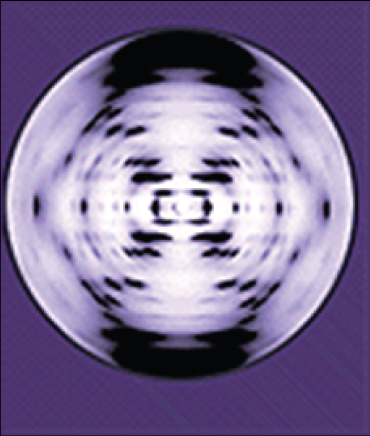3.3 Early Genetics and the Modern Synthesis
In the 1950s, Francis Crick (1916-2004) and James Watson (1928-) worked together to determine the structure of DNA at the University of Cambridge, England. Other scientists like Linus Pauling (1901-1994) and Maurice Wilkins (1916-2004) were also actively exploring this field. Pauling previously discovered the secondary structure of proteins using X-ray crystallography. In Wilkins’ lab, researcher Rosalind Franklin (1920-1958) was using X-ray diffraction methods to understand the structure of deoxyribonucleic acid (DNA). Watson and Crick were able to piece together the puzzle of the DNA molecule on the basis of Franklin’s data because Crick had also studied X-ray diffraction (Figure 3.5). In 1962, James Watson, Francis Crick, and Maurice Wilkins were awarded the Nobel Prize in Medicine. Unfortunately, by then Franklin had died, and Nobel prizes are not awarded posthumously.

This discovery and resultant understanding of DNA was a key element in bridging the work of Darwin, Wallace, and Mendel. For the first time, scientific understanding began to unfold about the particles (genes) which were passed from parent to child during conception. This unified theory of evolution became known as the Modern Synthesis, defined as “changes in allele frequencies within populations.” This definition focused evolution on the genetic and biological processes that occur in response to natural selection as explained by Darwin’s postulates. It is from Modern Synthesis that many of the concepts of inheritance and mutation we know today emerged.
For a more extensive explanation of these processes (e.g., gene flow, genetic drift, mutation pressure), check out Formation of New Species and Population Genetics in Biology 2e on OpenStax.
a self-replicating material that is present in nearly all living organisms as the main constituent of chromosomes. It is the carrier of genetic information.
a unit of heredity which is transferred from a parent to offspring and is held to determine some characteristic of the offspring.

